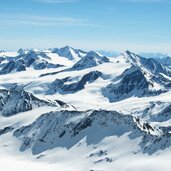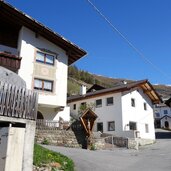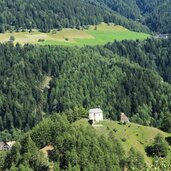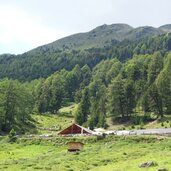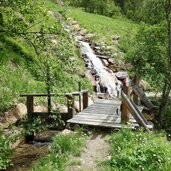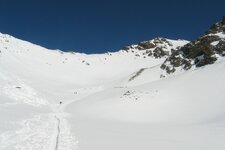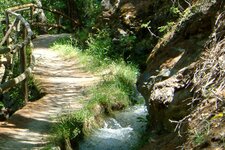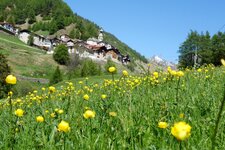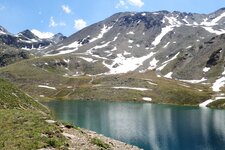The certified “Mountaineering Village” lies in the Val di Mazia, which extends to the Palla Bianca, the “Queen” of the Oetztal Alps
A small village in Upper Val Venosta, Mazia (Matsch), lies at an altitude of almost 1,600 metres on the slopes above the Rio Saldura stream. Despite its exposed location, it was settled early on. It is said that St. Florinus, to whom the parish church is dedicated, was born here.
On the edge of the village, another chapel is dedicated to him, next to a farm where he is said to have been born in the 7th century. The numerous surrounding farms and hamlets, such as Run, Cortaccia, the Glieshöfe farms - a well-known starting point for hikes - and Thanei, also belong to Mazia. On the slope, the ruins of the Mazia di Sopra and Mazia di Sotto Castles bear witness to the time when the Lords of Mazia were one of the most powerful noble families in the Val Venosta. In the 14th century, they moved to Coira Castle near Sluderno and died out shortly afterwards.
A few years ago, Mazia was named the first South Tyrolean "Mountaineering Village" of the international Alpine Club initiative. It is a starting point for varied hikes. You can choose between the leisurely Bergwaalweg path and the Val Venosta High Route, which runs at an altitude of around 2,000 metres. Other destinations include the Saldura Lakes and Lake Upi.
The Val di Mazia extends to the glacier of Mt. Palla Bianca, called Weisskugel in German. It is one of the most impressive high-alpine tours in the Eastern Alps and a beautiful ski tour in winter. In addition, the reopening of the historic hiking trail number 1 over the Fossalunga Pass between the Val Senales and the Val di Mazia was celebrated with a festive mountain mass in July 2025.



